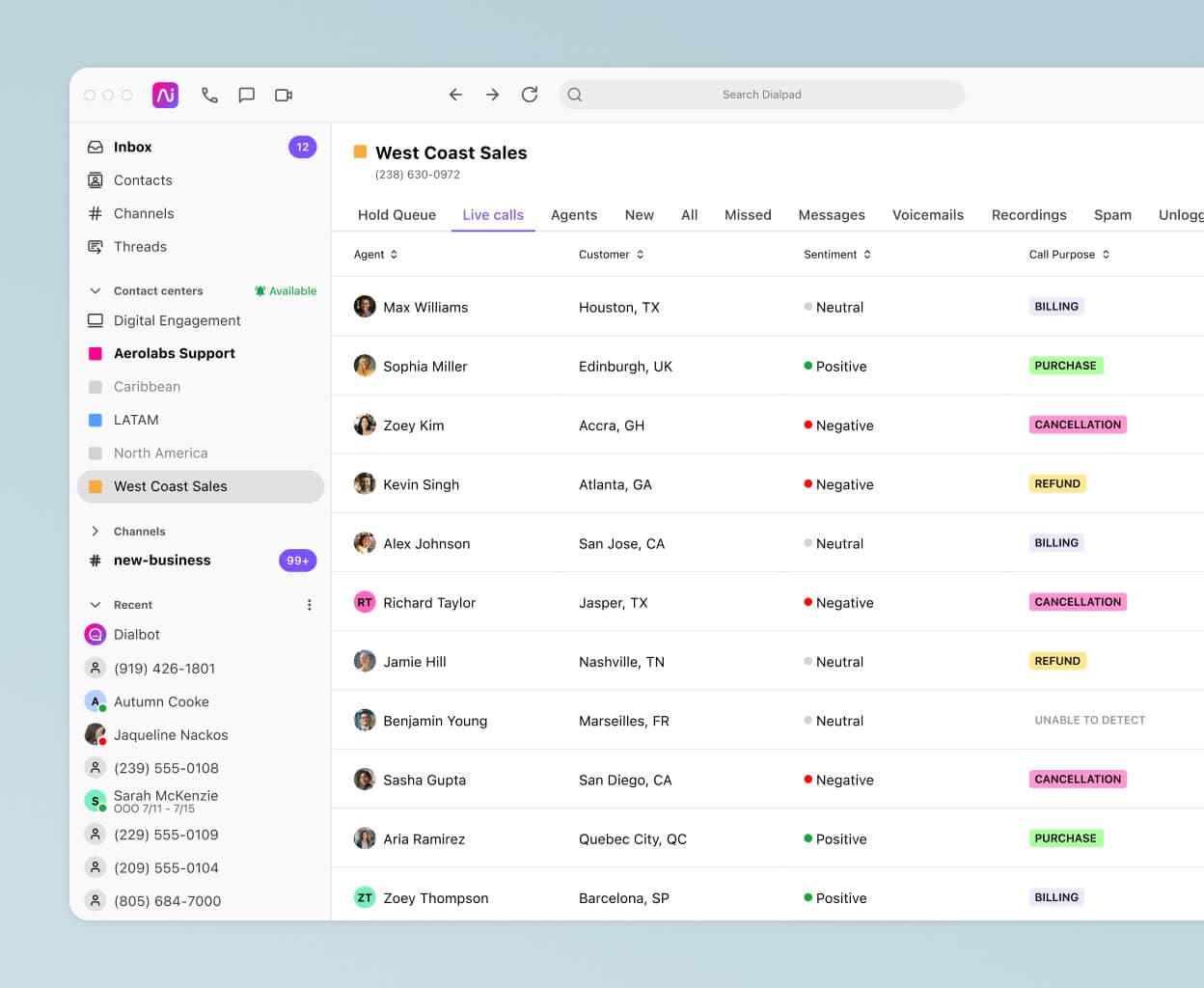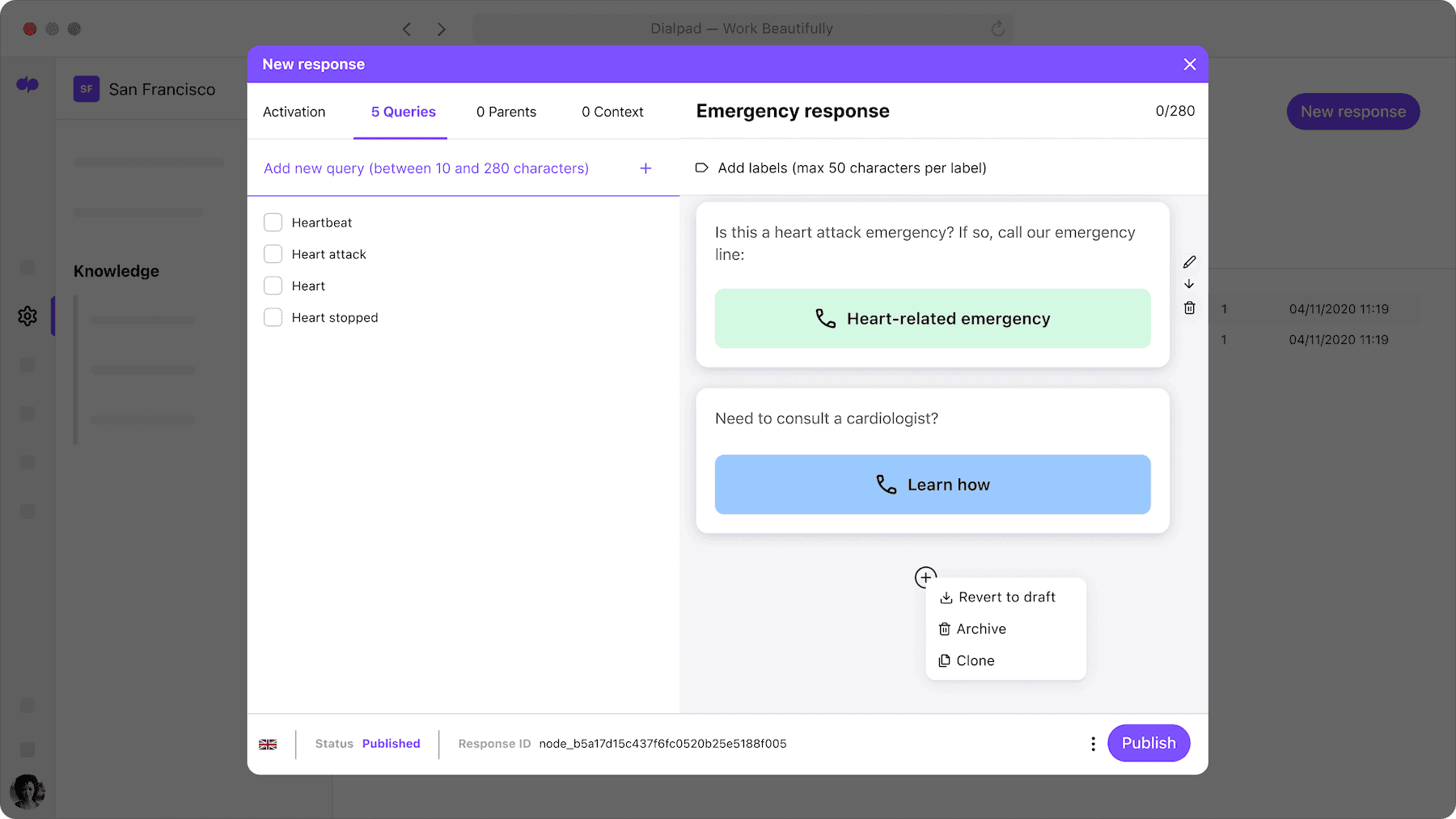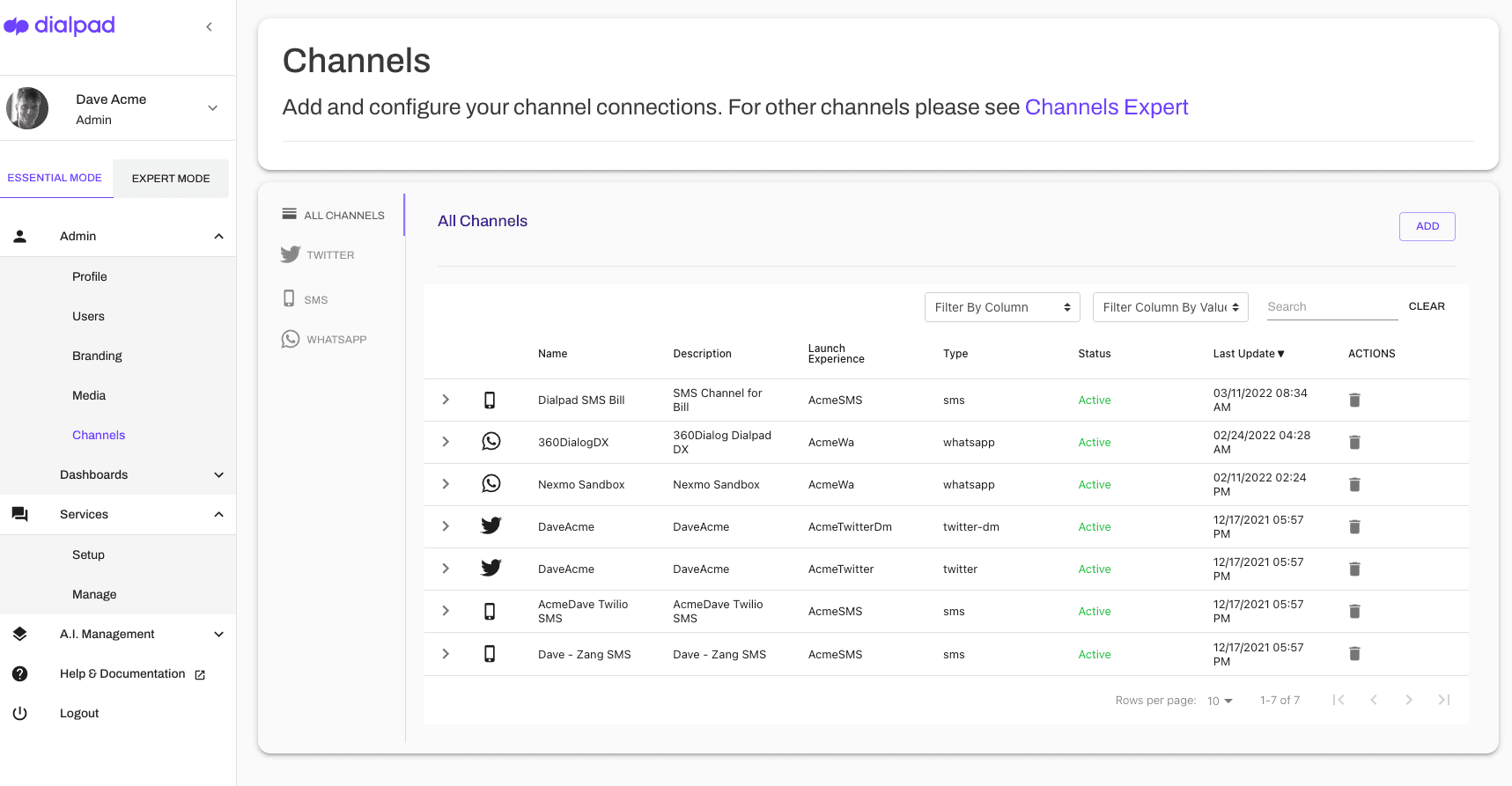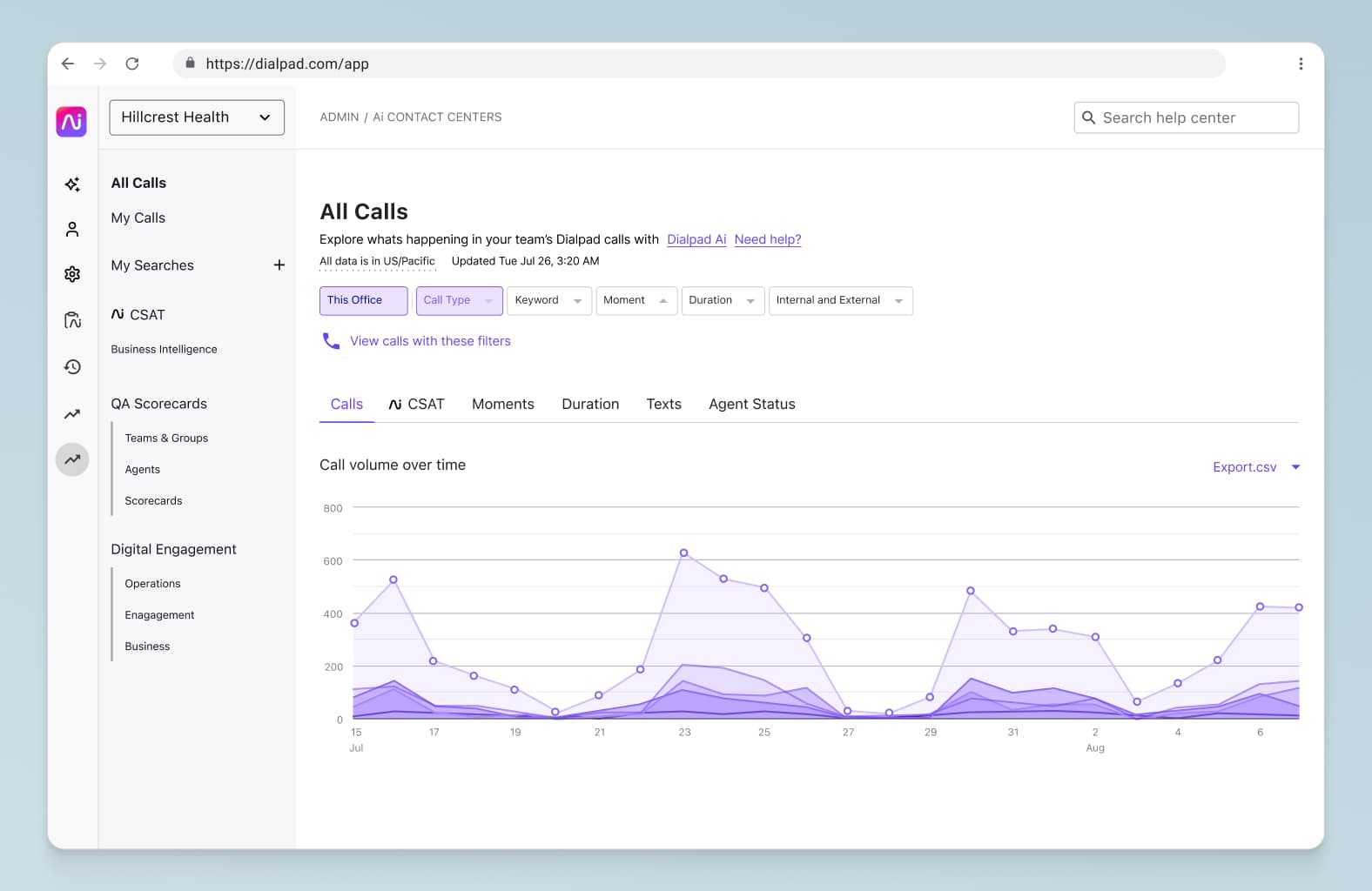Are you covering all of these customer service channels?

Customer Support Manager - Tier 1

Tags
Share
Whether you run a car dealership, law firm, or ecommerce business, it's more important than ever to have a strong customer service presence across all your customer contact channels.
Today, customers are reaching out to businesses through DMs on social media, live chat, and yes, the phone (still)— and they expect a seamless experience no matter which channel they’re using.
Seems unfair, doesn’t it?
It can be daunting to try to cover all the customer service channels out there, but it's important to at least be aware of them—customer needs change pretty frequently, and what may be the most popular communication channel today might not be the same tomorrow. (Just look at how quickly consumers adopted live chat and social media.)
In this blog post, we'll go over some of the most important customer service channels to consider, and how you can choose the right ones for your support and/or sales team to cover.
What are customer service channels?
A customer service channel is simply a way in which a customer tries to contact your company to solve issues or ask questions. . There’s an ever growing number of customer service channels, which can include phone calls, emails, live chat on company websites, and even in-person (even though that doesn’t happen quite as often anymore).
Digital customer service channels vs traditional customer service channels
Today, there are more customer service channels than ever. Besides the more traditional channels mentioned above, there are more and more digital customer service channels too.
Some examples of digital channels include WhatsApp, Apple Business Chat, Facebook Messenger and Instagram, but any application where your customer can access your business could be considered a digital customer service channel.
While it's definitely not necessary for businesses to cover every single channel (if your customers only contact you through your website, then there’s no point spending a fortune on starting up a call center), it is important to at least be aware of them.
More importantly, if you’ve determined that there are several channels that are important to cover in order to provide proactive customer service, you’ll need to evaluate the technologies you’ll need to manage those channels.
A quick tip here: Managing more than one channel at a time through separate applications can quickly become unwieldy for your agents. If that’s the case, consider an omnichannel approach to make it more cost-effective and easy for agents to handle interactions across multiple disparate channels.
👉 What is an omnichannel approach?
The difference between an omnichannel customer experience and just a regular multichannel experience is that with omnichannel, your customers and agents can see full context for all past conversations, across every channel. This means if a customer called you, messaged you on Instagram, then started a live chat on your message, your support agents will be able to see all of that context in one place. (That’s not possible with multichannel contact centers!)
7 types of digital customer service channels to be aware of
1. Phone calls
Voice calls are still one of the most popular methods of customer communication, especially when it comes to complex issues or questions that require a human touch. (Think of someone who needs to talk to their investment banker.)
Of course, there are a number of issues with customer service via phone: long wait times, confusing call queues, getting transferred to multiple agents, and more. Everyone has had a poor experience with a voice-only contact center, which is why many consumers are gravitating toward other digital channels when they need to reach businesses.
There have been some improvements to this channel in recent years, like the customer callback feature that lets the caller hang up and get a call back from the business when an agent is free, so they don’t have to wait on the phone for hours. But even this isn’t always ideal, especially for more urgent questions.
Dialpad Ai Contact Center offers voice features that make it incredibly simple for customers to get the answers they need—in addition to features that speed up customer flows like advanced IVR and intelligent routing, Dialpad also comes with comprehensive AI features designed to make interactions much easier for supervisors, agents, and customers in voice channels.
For example, Dialpad Ai can analyze sentiment in real time so that supervisors can easily see where they might need to jump in and help an agent:

2. Self-service
Self-service options like online FAQs and IVRs have always been a good sort of backup customer service channel. Many people do prefer to find answers on their own instead of waiting on hold for an agent, and these options have the added benefit of saving businesses time and money by reducing the number of calls or chats they need to handle.
Today, self-service options have evolved to include chatbots and even more advanced options like conversational AI (kind of like a chatbot that can answer a wider variety of complicated questions and even escalate calls to agents).
Dialpad Ai Contact Center, for example, has an easy-to-set-up Ai Virtual Assistant that uses conversational AI to understand customer intent and immediately surface the right answers for each customer. It can also populate customized workflows, form-fills, and other automations that make it incredibly simple for customers to get what they need:

3. Live chat
Once a customer has tried to get an answer via self-service options, their next move is usually to try live chat (if the business offers it). Live chat is quickly becoming a popular customer contact channel, mainly because it combines the best of both worlds: speed and personalization. Customers appreciate being able to get an immediate response (for some reason waiting on hold doesn’t feel quite the same as waiting for a response on live chat?), and agents can still build rapport by using friendly language and emojis.
That said, live chat can be expensive if you're not using a tool that integrates with your existing contact center platform, and it does add a layer of complexity to staffing. (Will your agents rotate between live chat and phone duty? Or will you have agents that only do one or the other?)
With Dialpad, our agents can handle all of these channels, including live chat, from the same platform!
4. Social media
No matter which industry you’re in, providing customer support across a number of social media channels is imperative today.
Many customers already use social media to connect with friends and family, and are also using it to connect with brands they love (or hate), partially because most businesses will respond pretty quickly—especially to public complaints on social media.
But managing social media accounts can be time-consuming—there are so many different platforms and if you have to monitor Facebook and Twitter and Instagram and so on… it can get unwieldy quickly.
One way to alleviate this is by using an omnichannel contact center solution. This will consolidate all your channels—not just social media—into one simple place for your agents and supervisors. For example, Dialpad Ai Contact Center can do exactly that:

Contact center agents can respond to customer inquiries across every single channel—not just social media—from a single, easy-to-use application.
5. SMS
Like live chat, SMS (short message service) is a text-based customer service channel that's very popular today because of its convenience and immediacy.
Many consumers, especially Gen Z, prefer texting and like being able to reach out to businesses via text whenever they have a question or problem.
6. Video chat
For some specific industries, video chat might be a customer service channel to keep an eye on. If you’re in a high-touch role (like our investment banker example above), your clients might expect to be able to talk to you over a video call.
There may also be certain technical support teams that find it easier to walk customers through troubleshooting over video.
That said, video chat can be more expensive and time-consuming than other channels, since like phone calls, an agent can only handle one video chat at a time, and it’s a pretty effort-intensive channel to provide support through.
With Dialpad Ai Contact Center, customers do have the option to escalate calls to a video chat (if you decide that you want to make that available).
7. Email
Email is an older, but still popular customer service channel. Many customers prefer this method because it allows them to have a written record of their conversation, and it can also be easier to keep track of long conversations via email.
Unlike phone calls, though, the wait time for emails can be even longer, and email can get lost in (very full) inboxes. Today, at least from a business perspective, there are more efficient, faster, and cost-effective ways to resolve customer questions (like live chat and self-service).
How to choose the right customer service channels to cover
So, how can you determine which customer service channels your business needs to prioritize? In most cases, it isn’t wise for a business to just try to cover every single channel out there.
If you have a limited budget and a small team, that’s not going to be realistic, and you’ll need to prioritize and choose the channels that will have the biggest impact on your business goals.
So, here are three things to do:
Ask your customers
The needs of your customer base should be a key factor behind this decision. What channels do your customers prefer? If you don't know, you can survey them or look at data from past interactions. You can improve survey experience with technology like the best QR code generator that helps you share the survey forms in simple QR code format.
Understand industry trends
Once you know what your customers are asking for, it’s also worth taking some time to study your industry and competition. Is it becoming obvious that customers in, say, the travel industry are leaning toward using WhatsApp and other social media channels to try and get customer service?
If so, you might want to start investing in those channels in the near future and have a plan for how you can shift your omnichannel customer service approach.
Pay attention to employee performance
Finally, know the capabilities of your team and trends you’re seeing from your customer service analytics. Can your current agents handle multiple channels? What’s your current average speed to answer? We can keep of track of all of these KPIs from our dashboard in Dialpad:

Also, do you have the resources and systems in place to support these channels? What about budget (and time) to invest in new tools or training?
To successfully pivot to covering new customer contact channels, it’s best to have your goals and KPIs in mind—are you looking to reduce costs, improve satisfaction, or increase sales? (Or all three?) This will help you make the business case, justify the spend, and prove success later on.
All your customer service channels in one platform
Today, businesses in almost every industry need to handle more than one customer service channel. Between phone calls, live chat, social media, and emails, it’s actually more likely that your customer service team will need to manage at least three or four.
How can you make it as easy as possible for your agents to provide a better customer experience, while also allowing your customers to reach out to you through these channels without having to repeat their questions every single time?
A solid contact center platform, with customer service AI built in, will go a long way in helping both your supervisors and agents manage more customer service requests, across more channels. And that’s exactly what Dialpad Ai Contact Center is designed to do. See how it works!
Want to manage all your support channels in one place?
Book a demo to see how you can do that with Dialpad Ai Contact Center, or take a self-guided interactive tour of the app on your own!








